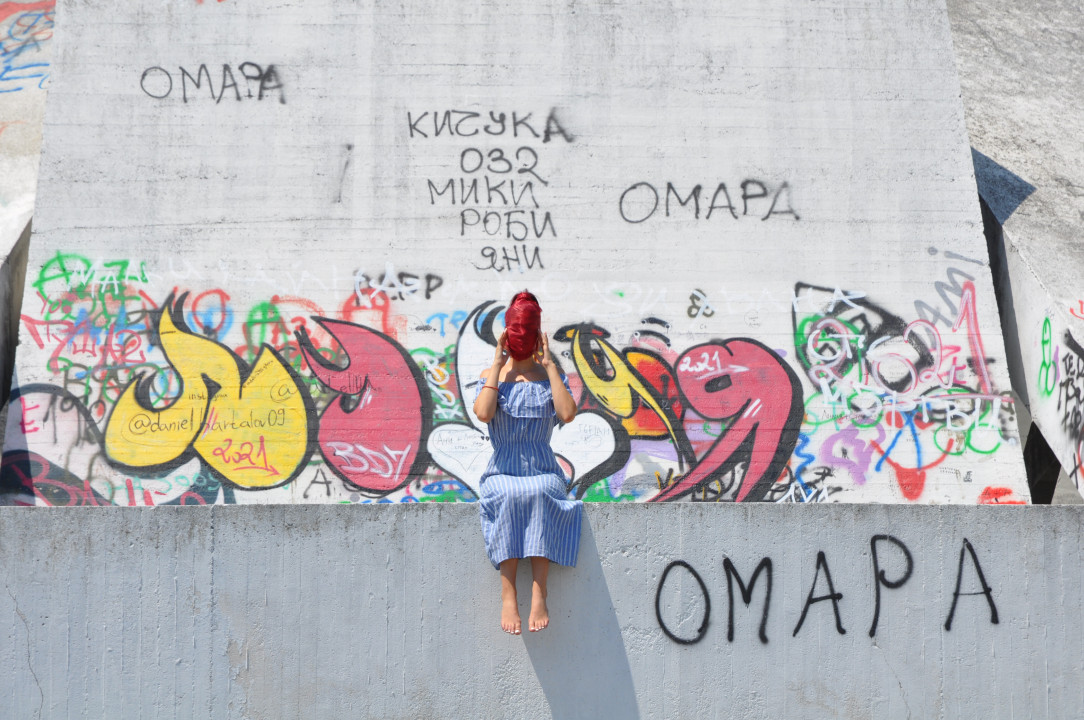
Author: Kalina Todorova
Can we forget if we have never remembered?

This question is spinning around in our heads as we peek inside the padlock closed metal doors of the Fraternal Barrow. A vast space, beautiful in its own way, unused for the most part, which has long forgotten its very own purpose.

The memorial complex is dedicated to those who fell during the Liberation of Bulgaria, as well as those who fought during the Balkan, First and Second World Wars. After the symbolic year of 1989 it has been robbed several times which led to its permanent closure.

Walking towards the mound, on the wide brick road in the centre of the park, one feels as if being torn away from the hectic everyday life of the surrounding modern world and taken to a distant, long gone time. A time of battles, wars, winners and losers. A time when the national spirit and pride were the main component of the socio-cultural and political life in Bulgaria. An element without which the survival of an exhausted nation would seem impossible.

The period after World War 2, from the 50s until 1989, witnessed a boom in the ideal of immortalising people and deeds through the creation of national monuments, statues and memorials. The degree to which such glorification at that time was purely a grateful gesture for memorial purposes is questionable. Historians still debate the extent to which the intention was more a propagandistic charade rather than a historical event.

The first competition for the creation of the monument was announced in 1955, and the memorial complex was to be located on Nebet Tepe. After the project was not implemented, several more developments followed. Finally, in 1971 the construction at its current location began - in the eastern part of the park "Recreation and Culture", near Mall Plovdiv.

The monument was revealed by Todor Zhivkov at an official ceremony in 1974 on the occasion of the 30th anniversary of the 9 September coup d'état. Two architects (Lyubomir Shinkov and Vladimir Rangelov) and three sculptors (Prof. Lyubomir Dalchev, Ana Dalcheva and Petar Atanasov) were working on the project.

The final composition is impressive. With its 90 metres in length, it resembles a Thracian mound, with wide retaining components in the centre and panoramic sculptural elements decorating the insides of the walls.

The eternal fire that once burned in the middle of the room has long been extinguished, and the remnants of 126 members of the guerrilla movement remain locked behind metal bars, at the bottom of the mound and of memory.

The memorial place is now a gathering point for teenagers and young people, who sit around the mound and on the massive pyramidal forms of the outer facade.

The Fraternal barrow in Plovdiv is the embodiment of our shared cultural memory, or more precisely - our habit to forget and abandon. Covered with modern graffiti in the form of insulting slogans and obscene symbols, the monument has become a metaphorical victim of our universal mania for self-assertion. The statement 'I was here' or the consecutive Instagram profile, both written with paint on the walls, are the equivalent of how we continue to look for our place in society, in the country or the world, without first thinking about what lies under the cover of our shared past. There is no way we can know where we are going if we do not understand where we are coming from.

In 2012, the regional governor Zdravko Dimitrov proposed to include the monument in the UNESCO World Heritage List so that the place could regain its function as a guardian of history and begin to be used not only as an unfunctional crypt, but also as a cultural educational landmark. However, these plans were not fulfilled. Today, instead of the mound being an open centre for events, a suitable place for screenings and exhibitions, or simply as a museum space, it remains closed and neglected. A time capsule that no one looks at anymore.
Photos: Kalina Todorova